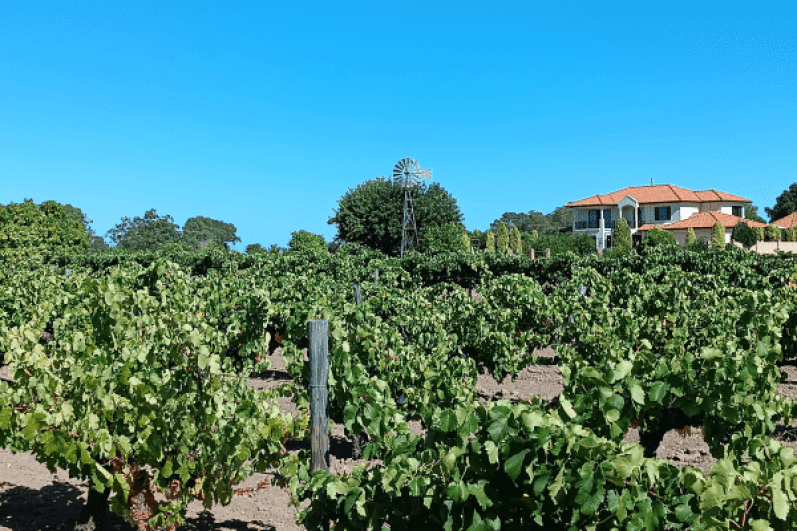Perth is a beautiful part of the world with stunning beaches, gorgeous rivers, lovely green parks, and a bustling city that matches any other city in Australia.
Also, Perth in Western Australia is fast becoming a popular destination for travellers to the land down under, and it’s easy to see why, given the number of fun-filled attractions on offer in the exciting city, including the outer suburbs.
However, not everything needs to come at a cost in your travels; many Perth attractions are affordable. Many free things to do in Perth will keep you occupied for hours.
That’s right, absolutely nothing. Of course, certain activities within the attraction may come at a cost. However, you can always ignore such interests and enjoy the Perth activities for what they indeed are.
Let’s look at what’s happening in Perth without pulling out your wallet because we all want to save money while travelling.
Are you travelling to Perth for a hectic vacation? Look for fantastic hotel options at Booking.com!

Free things to do in Perth include a wander around the Swan River.
Free things to do in Perth, Western Australia.
If you’re planning a trip to Perth and looking to save money, this blog post is for you. I’ll share a list of free activities and attractions you can enjoy while exploring the vibrant WA capital city. From scenic walks and stunning beaches to museums and cultural experiences, there’s something for everyone. So sit back, relax, and get ready to discover the best free things to do in Perth.
Enjoy the scenery inside Kings Park and Botanical Gardens.
Right on the city’s edge, Kings Park and Botanical Gardens are some of the best things to see in Perth. It offers mesmerising views of the gorgeous Swan and Canning River, including the picturesque skyscrapers of Perth CBD.
Free to enter and with free parking, Kings Park is one of the places to go in Perth for those who love to wander the gardens, explore the bush and take a mini hike through the many trails that come with top Perth sightseeing places.
It’s an excellent opportunity to marvel at the botanical gardens, remember those who have fallen in battle at the War Memorial, explore the Australian native trails and conquer your fear of heights on the Lottery West Federation Walkway.
If you have a few dollars to spare and wish to spend a few bucks, you can grab a coffee or a decent lunch at one of the cafés in Kings Park.
If you want to see Kings Park at its’ Best! Enjoy a Segway Tour through Klook!

The view of Perth City from Kings Park.
Perth City Places to VIsit – Elizabeth Quay
New to Perth tourism, 2016 to be exact, Elizabeth Quay is on the edge of the CBD, where you can almost touch the surrounding buildings.
The gorgeous views of the stunning skyrises will take your attention. However, you won’t help but be sidetracked by the Swan River and the fascinating Elizabeth Quay Bridge, which faces opposite the city.
It is fun to walk and gaze at this vibrant feature that has taken Perth to a whole new level when it comes to tourism in the state. On a scorching hot day, the kids can get drenched at the BHP Billiton Water Park, also accessible in Perth.
So, if you’re visiting in the summer, bring your swimwear.
Naturally, other things at the Quay cost money, such as restaurants, cafes, mini golf, and laidback ferry rides on the Swan River.
Don’t let that stop you. When visiting the CBD, Elizabeth Quay should be on your list; afterwards, you can shop in the city centre.

Elizabeth Quay, Perth, Western Australia
Hillarys Boat Harbour
Nestled just a little north of Perth, Hillarys Boat Harbour is an idyllic and charming place worth a visit. Surrounded by stunning beaches, luxurious yachts, and the Mighty Indian Ocean, it is a picture-perfect destination that will leave you spellbound.
While it’s free to enter the harbour, tourists can expect to spend some money on the various attractions and activities on offer. But don’t let the cost deter you from exploring this beautiful location. A leisurely stroll around Hillary’s is just as enjoyable as any other activity within the harbour.
On a hot day, the kids can have a blast jumping off the pier and frolicking in the cool waters of the harbour. For those willing to spend some money, the harbour is a tourism heaven with great retail outlets, cafés, and restaurants where you can indulge in some retail therapy or sample delicious cuisines.
But that’s not all; the Great Escape theme park is a paradise for kids with its spine-tingling water slides and other exhilarating, kid-friendly attractions. So, whether you’re in the mood for a relaxing stroll, some retail therapy, or a fun-filled day out with the family, Hillarys Boat Harbour has something for everyone.

Hillarys Boat Harbour and the Yachts and Townhouses.
Enjoy the Nature of Whiteman Park
Spread out amongst 4000 hectares of Australian Nature, Whiteman Park is a trendy day out for families in Perth.
Only a fifteen-minute trip from the city, a day out is not near enough in Whiteman Park, surrounded by open parklands, a typical Australian bush, and kilometres of trails to ride your push bike or enjoy an easy-going stroll.
It’s free to enter, especially if your only interest is having a picnic lunch and having fun in the park. Some attractions do cost, but only if you wish. You could easily spend a day at Whiteman Park and not spend a cent, especially if chilling outdoors is your kind of deal.
Other attractions within the iconic park include The Caversham Wildlife Park, The Village, Museums and tram ride, to name only a few places to see in Whiteman Park.

The Kangaroos of Caversham Wildlife Park in Whiteman Park.
Enjoy a Leisurely Stroll along the Banks of the Swan River
If you’re seeking a serene and refreshing way to spend your day, you can’t go wrong with a leisurely walk or bike ride along the winding paths of the stunning Swan River. The river is located in the heart of Perth and is a perfect escape from the hustle and bustle of city life. Its picturesque scenery, with its rolling hills, lush greenery, and sparkling water, is sure to enchant you.
The riverside track is an excellent place to stroll, and you’ll find numerous opportunities to take breathtaking photos as you go. From this vantage point, you can see the Perth CBD, South Perth, and the new Optus Stadium, which offers a unique and spectacular view of the city.
If you prefer biking, you can pedal down the river and enjoy the spectacular scenery while enjoying the fresh air and sunshine. The river’s paths are well-maintained and easy to navigate, making them perfect for a leisurely bike ride.
Whether you walk or bike, a day spent at the Swan River will be casual and relaxing. So why not pack a picnic, grab your walking shoes or bike, and head down to the Swan River for fun and relaxation? You’ll surely cherish the memories you make in this beautiful part of Western Australia.

Experience Perth’s Swan River with a gentle stroll.
Enjoy Time in the Picturesque Swan Valley
Perth, the capital of Western Australia, is a bustling metropolis that offers a vibrant and cosmopolitan lifestyle. However, the picturesque Swan Valley is a must-visit destination for those looking to escape the city’s hustle and bustle. The region’s idyllic landscapes, charming wineries and breweries, and abundance of free activities make it an ideal retreat for everyone.
Nature lovers can stroll through the lush parks and gardens, admiring the vibrant colours of the wildflowers and watching the native birds. The region also has several museums and galleries that showcase the area’s rich history and culture, providing visitors with a unique learning experience.
The Swan Valley is home to numerous wineries and breweries, where you can sample some of the finest wines and beers in the country. You can also indulge in a gastronomic adventure by trying the delicious local food, including fresh produce, artisanal cheeses, and chocolates.
For those who love the great outdoors, the Swan Valley offers endless opportunities to explore the region’s natural beauty. You can bike through the vineyards, go fishing in the river, or picnic by the tranquil waters. With so much to see and do, the Swan Valley is the perfect retreat for anyone looking to relax and unwind amidst nature’s splendour.

You’ll find more than enough reasons to Visit the Swan Valley in Perth.
In Summertime – Hit the famous Perth Beaches.
When the warm summer months roll around, there’s nothing quite like the feeling of sand between your toes and the refreshing ocean breeze in your hair. Luckily, Perth has many stunning beaches that offer the perfect escape from the heat.
Whether you spend your day lounging on the golden sands of Cottesloe, catching some waves in Scarborough, or exploring the bustling port city of Fremantle, there’s no shortage of things to do in this coastal paradise.
Best of all, many of these activities won’t cost you a dime, so you can enjoy the beauty of Perth without breaking the bank. Remember to care for your skin by lathering with sunscreen, staying hydrated, and seeking shade throughout the day.
By prioritising your health and wellness while exploring all that Perth offers, you can make the most of your summer and create unforgettable memories that will last a lifetime.
Enjoy a Grand Perth and Fremantle tour with Klook and enjoy epic Perth sightseeing attractions!

The Cottesloe Beach Pavillion is the cornerstone attraction.
A Recap of Free Things to Do in Perth
In conclusion, Perth may often be overlooked in favour of its busier and more popular Australian counterparts, but it certainly has a lot to offer for those on a budget. From stunning beaches and parks to museums and galleries, there is no shortage of free activities in Perth.
Our list highlighted just a handful of the many options available in this beautiful city, but hopefully, it has inspired you to explore even further. Adventure doesn’t always have to come with a price tag – sometimes, the best experiences are found in the simplest moments.
So next time you visit Perth, whether as a local or a tourist, don’t be afraid to take advantage of these beautiful free opportunities. Let these budget-friendly activities enhance your trip and make it even more memorable.
Fair Dinkum Traveller now offers personalised travel itineraries. For more details, click here.

The magnificent Optus stadium is close by for sporting events and concerts. It’s free to admire the sights and walk around the superb Stadium.



















































Get Your Free E-Book Today!
Stay in the loop with our monthly newsletter! Get expert travel tips and destination advice, and snag a free E-Book!
You have Successfully Subscribed!